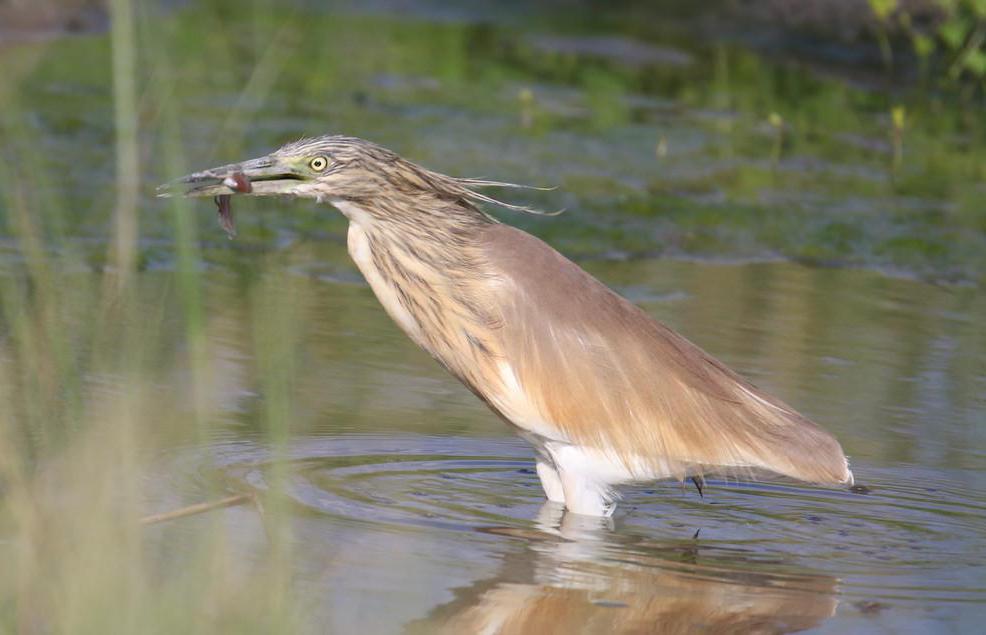At AllThingsNature, we're committed to delivering accurate, trustworthy information. Our expert-authored content is rigorously fact-checked and sourced from credible authorities. Discover how we uphold the highest standards in providing you with reliable knowledge.
What is a Surfbird?
A surfbird, or Aphriza virgata, is the only member of the Aphriza genus, belonging to the larger family Scolopacidae. It is a small to medium-size wading bird bearing close resemblance to a bittern or tern. The surfbird has two geographical ranges. During the breeding season, these birds can be found in scattered locations across the mountainous, rocky terrain of Alaska and the Yukon, and during the remainder of the year, it is found along the majority of the Pacific Coast from Southern Alaska to Chile. Most commonly found in small flocks, a group of surfbirds is known as a "kahuna" or "board."
Outside of the breeding season, both males, females and juveniles appear very similar. They have white rumps with a distinctive black stripe. The plumage is a mottled gray, and the bird has a white stomach. During the breeding season, the adult male surfbird develops rust-colored plumage on his back.

After courtship, during which the males will vie for a female's attention with vocal and flight displays, the female creates a nest at ground level in a natural depression or will scrape a depression in her chosen nesting site. Nesting sites usually are located in rocky, rugged terrain with some natural vegetative or rocky cover. She proceeds to line the nest with vegetation before laying a clutch of as many as four eggs. Egg clutches are incubated by both breeding partners.

After chicks have gained their first fluffy, flightless feathers, they venture away from the nest to forage for food, which consists mainly of small insects and invertebrates. The chicks return to the nest after foraging, and the parents still provide some level of care, offering protection against predators and teaching the chicks to fly. The main defensive technique employed by the surfbird is to remain still and unmoving on the nest, and when the potential predator is almost on top of the nest, the bird will fly up directly in front of the threat, using a display of flapping wings and harsh vocals to surprise or frighten the predator.
When it has matured, the surfbird expands its diet. In addition to insects and small invertebrates, it also will eat crustaceans such as muscles and barnacles, which can be found close to the shore or on rocky outcroppings. Like many creatures that are reliant on the shoreline for breeding, food sources and survival, the surfbird is put at high risk by oil spills and human encroachment.
Frequently Asked Questions
What is a Surfbird and where can it be found?
A Surfbird is a medium-sized shorebird belonging to the family Scolopacidae, known for its distinctive breeding plumage and stout, slightly down-curved bill. They are typically found along the Pacific Coast of North America during migration and breed in the rocky alpine areas of Alaska and the Yukon.
What does a Surfbird eat?
Surfbirds primarily feed on invertebrates such as insects, crustaceans, and mollusks. They forage along rocky coastlines, using their bills to flip over stones and debris to find food. Their diet varies with location and season, adapting to the available food sources in their environment.
How do Surfbirds breed and where do they nest?
Surfbirds breed in the high mountain ranges of Alaska and the Yukon, preferring barren, rocky areas above the tree line. They lay their eggs in simple scrapes on the ground, often lined with lichens or plant material. The breeding season typically begins in late May or early June.
Are Surfbird populations stable or are they at risk?
Surfbird populations are currently considered stable, though they face threats from habitat loss and pollution. As a species that relies on specific coastal and alpine habitats, they are vulnerable to changes in these environments. Conservation efforts focus on protecting critical habitats and monitoring population trends.
How can I identify a Surfbird?
To identify a Surfbird, look for a chunky shorebird with a short neck and a long, slightly down-curved bill. In breeding plumage, they have a distinctive pattern of black and white on their wings and back, with a rufous head and upper breast. Non-breeding plumage is more subdued, with gray-brown tones.
What is the typical lifespan of a Surfbird?
The lifespan of a Surfbird in the wild can vary, but they can live up to 10 years or more. Factors affecting their longevity include predation, availability of food, and environmental conditions. Banding studies help researchers gather data on the age and movements of individual birds.
AS FEATURED ON:
AS FEATURED ON:












Discuss this Article
Post your comments